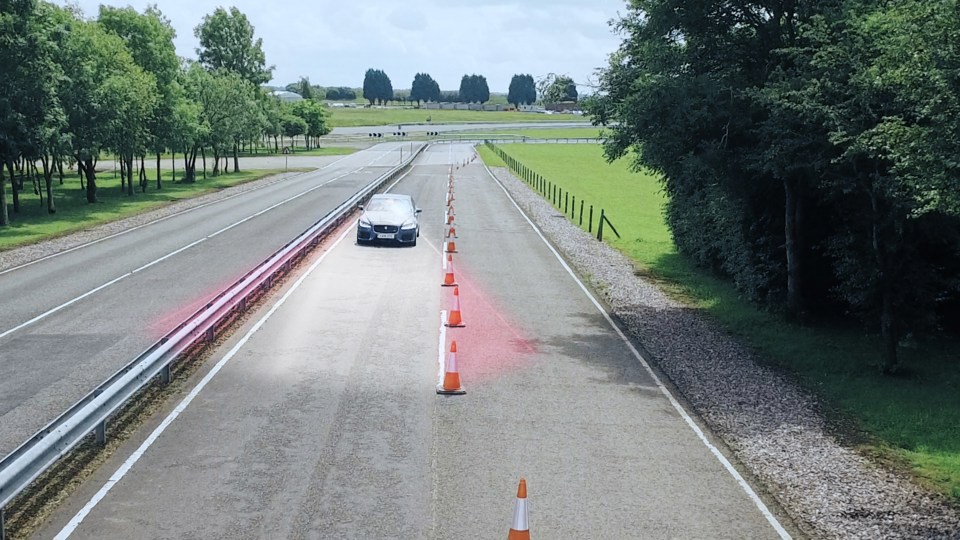Jaguar Land Rover plans to create a fleet of more than 100 research vehicles over the next four years, to develop and test a wide range of connected and autonomous vehicle (CAV) technologies.
The first of these research cars will be driven on a new 41-mile test route on motorways and urban roads around Coventry and Solihull later this year.
The initial tests will involve vehicle-to-vehicle and vehicle-to-infrastructure communications technologies that will allow cars to talk to each other and roadside signs, overhead gantries and traffic lights.
Ultimately, data sharing between vehicles would allow future connected cars to co-operate and work together to assist the driver and make lane changing and crossing junctions easier and safer.
Tony Harper, head of research at Jaguar Land Rover, said: "Our connected and automated technology could help improve traffic flow, cut congestion and reduce the potential for accidents.
"We will also improve the driving experience, with drivers able to choose how much support and assistance they need. In traffic, for example, the driver could choose autonomy assist during tedious or stressful parts of the journey.
“But even when an enthusiastic driver is fully focused on enjoying the thrill of the open road, the new technology we are creating will still be working in the background to help keep them safe.
"Because the intelligent car will always be alert and is never distracted, it could guide you through road works and prevent accidents."
Roadwork Assist uses a forward-facing stereo camera to generate a 3D view of the road ahead and together with advanced image processing software, it can recognise cones and barriers.
The system will sense when the vehicle is approaching the start of the roadworks, identify an ideal path through complicated construction sites and contraflows, and inform the driver that the road is narrowing ahead. The system will then apply a small amount of steering assistance to the wheel to help the driver remain centred in lane.
Safe Pullaway: getting too close to the vehicle in front in traffic jams or when entering junctions is a common cause of accidents.
Low-speed collisions can also be caused by drivers hitting walls, garage doors or parked cars because they mistakenly put the vehicle into drive instead of reverse when attempting to pull away.
Jaguar Land Rover is developing an assistance system to prevent these types of collisions. Called Safe Pullaway, it uses the stereo camera to monitor the area immediately in front of the vehicle.
If objects such as vehicles or walls are detected, and the system receives signals from throttle pedal activation or from gear selection that could lead to a collision, the vehicle brakes are automatically applied and the driver receives an audible warning.
Over the horizon warning is part of a research project testing devices that use radio signals to transmit relevant data from vehicle to vehicle. If vehicles were able to communicate independently, drivers and autonomous cars could be warned of hazards and obstacles over the horizon or around blind bends.
Emergency Vehicle Warning allows connected ambulances, police cars or fire engines to communicate with other vehicles on the road: a device in the emergency vehicle would broadcast that it is approaching before the driver could see or hear flashing lights and sirens.
Drivers would receive an audible warning along with a visual alert telling them the direction the emergency vehicle is coming from and how far away it is: they can then safely pull over and allow the emergency vehicle to pass, which will minimise delays for the emergency services and prevent accidents.

















Login to comment
Comments
No comments have been made yet.